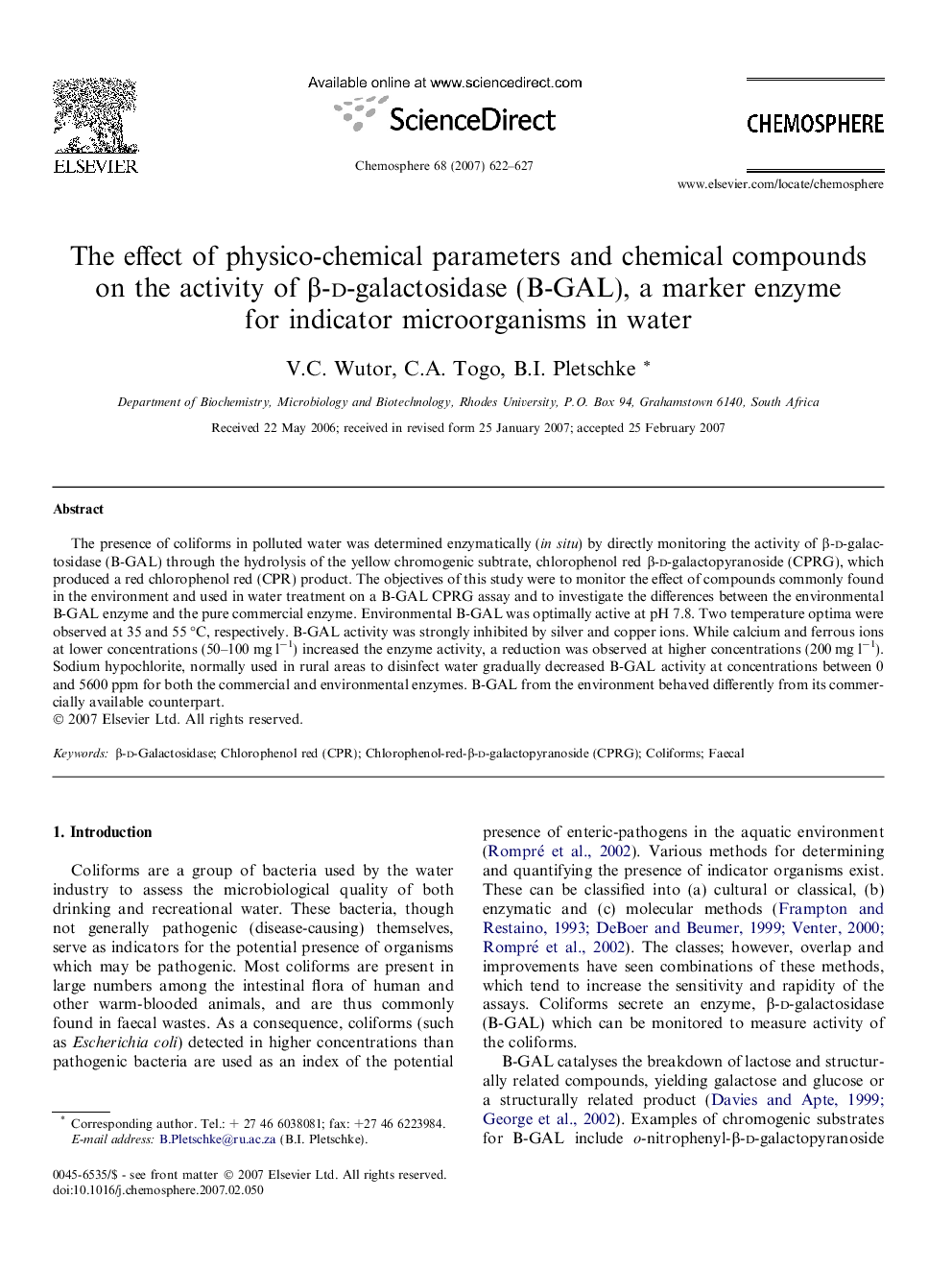| Article ID | Journal | Published Year | Pages | File Type |
|---|---|---|---|---|
| 4415011 | Chemosphere | 2007 | 6 Pages |
The presence of coliforms in polluted water was determined enzymatically (in situ) by directly monitoring the activity of β-d-galactosidase (B-GAL) through the hydrolysis of the yellow chromogenic subtrate, chlorophenol red β-d-galactopyranoside (CPRG), which produced a red chlorophenol red (CPR) product. The objectives of this study were to monitor the effect of compounds commonly found in the environment and used in water treatment on a B-GAL CPRG assay and to investigate the differences between the environmental B-GAL enzyme and the pure commercial enzyme. Environmental B-GAL was optimally active at pH 7.8. Two temperature optima were observed at 35 and 55 °C, respectively. B-GAL activity was strongly inhibited by silver and copper ions. While calcium and ferrous ions at lower concentrations (50–100 mg l−1) increased the enzyme activity, a reduction was observed at higher concentrations (200 mg l−1). Sodium hypochlorite, normally used in rural areas to disinfect water gradually decreased B-GAL activity at concentrations between 0 and 5600 ppm for both the commercial and environmental enzymes. B-GAL from the environment behaved differently from its commercially available counterpart.
